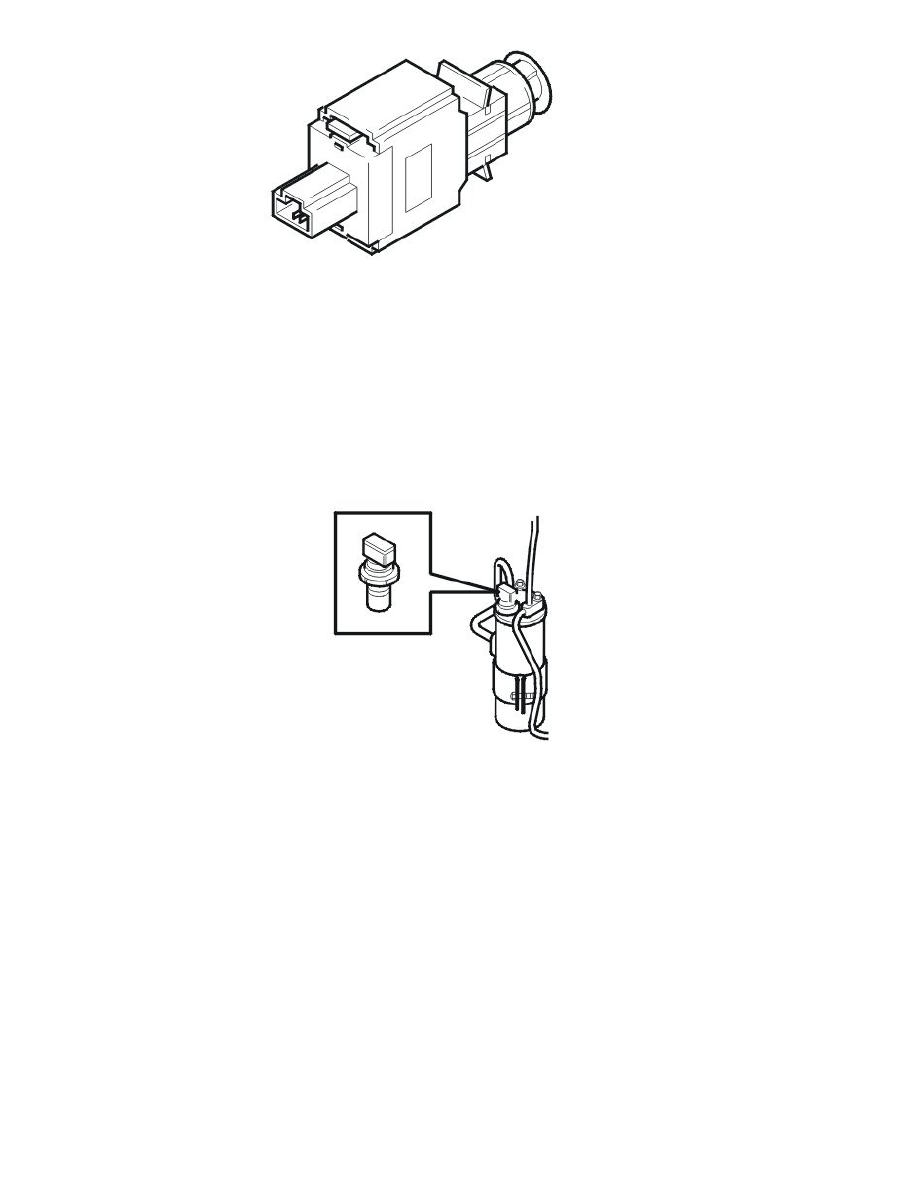XC90 AWD V8-4.4L VIN 85 B8444S (2005)

The purpose of the stop lamp switch is to provide the engine control module (ECM) with information indicating whether the brake pedal is depressed or
not.
A signal is transmitted to the engine control module (ECM) when the brake pedal is pressed. The engine control module (ECM) disengages the cruise
control (if activated). The brake pedal sensor also disengages cruise control. For further information, see Design and Function, Brake control system,
design.
The stop lamp switch is supplied with power from the ignition switch (terminal 30). When the brake pedal is depressed the switch closes and a high
signal (12 V) is transmitted to the engine control module (ECM).
The stop lamp switch can be diagnosed by the engine control module (ECM) and its status (depressed or not) can be read off.
The stop lamp switch is on the pedal box by the brake pedal.
A/C pressure sensor
The air conditioning (A/C) pressure sensor detects the pressure in the high-pressure side of the air conditioning (A/C) system.
The sensor is linear. It is grounded in the control module and supplied with 5 V from the control module. A linear signal (which depends on the pressure
in the air conditioning (A/C) system) is transmitted to the engine control module (ECM). Low pressure produces low voltage, high pressure produces
high voltage.
The air conditioning (A/C) pressure sensor can be diagnosed by the engine control module (ECM) and the sensor value can be read off.
The air conditioning (A/C) pressure sensor is directly mounted on the air conditioning receiver drier.
Transmission control module (TCM)
The engine control module (ECM) uses a directly connected signal from the transmission control module (TCM) in the start function (activating the
starter motor).
Accelerator pedal (AP) position sensor
